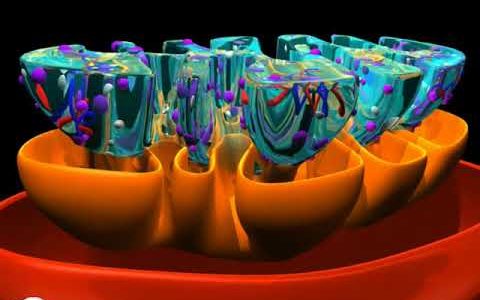cell, in biology, the basic membrane-bound unit that contains the fundamental molecules of life and of which all living things are composed. A single cell is often a complete organism in itself, such as a bacterium or yeast. Other cells acquire specialized functions as they mature.
These cells cooperate with other specialized cells and become the building blocks of large multicellular organisms, such as humans and other animals. Although cells are much larger than atoms, they are still very small.
The smallest known cells are a group of tiny bacteria called mycoplasmas; some of these single-celled organisms are spheres as small as 0.2 μm in diameter (1μm = about 0.000039 inch), with a total mass of 10−14 gram—equal to that of 8,000,000,000 hydrogen atoms. Cells of humans typically have a mass 400,000 times larger than the mass of a single mycoplasma bacterium, but even human cells are only about 20 μm across. It would require a sheet of about 10,000 human cells to cover the head of a pin, and each human organism is composed of more than 30,000,000,000,000 cells.
Animal Cells vs. Plant Cells
Animal cells and plant cells are both eukaryotic. Thus, they both have a defined nucleus and other membrane-bound organelles. However, animal and plant cells also have some fundamental differences.
Animal cells, unlike plant and fungi cells, do not have a cell wall. Instead, multicellular animals have other structures that provide support to their tissues and organs, such as skeleton and cartilage. Additionally, animal cells also lack chloroplasts found in plant cells. Chloroplasts are specialized organelles that trap energy from the sun and use it as fuel to produce sugars in a process called photosynthesis.
Additionally, while plant cells tend to have a large, central vacuole, animal cells lack this feature. Some animal cells do have small vacuoles, but their function is to assist in the storage and transport of large molecules.
source


